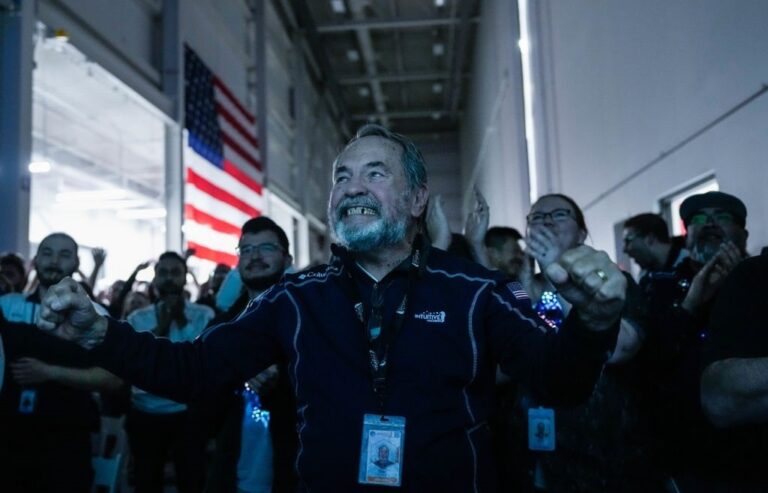Odysseus Has Found Its New Home
The spacecraft has safely landed on the moon.
By: Kirsten Brooker | March 12, 2024 | 576 Words

(Raquel Natalicchio/Houston Chronicle via Getty Images)
Odysseus, the first commercial spacecraft to land on the moon, has officially made history. On Thursday, February 22, at 6:23 PM, the crewless instrument softly rested on the moon’s surface in its south polar region. The trip was not without some level of difficulty and some technical issues. However, the mission was a success, and the phonebooth-sized machine is transmitting valuable information to researchers and scientists back on Earth. The moon landing is the first of its kind and the first time Americans have made direct contact with the moon since Apollo 17 in December 1972.
Intuitive Machines and the IM-1 Mission
As part of their CLPS (Commercial Lunar Payload Services) program, NASA hired a private company in Houston named Intuitive Machines to build the moon lander and carry out the IM-1 mission. The IM-1 is one of several missions that NASA employed Intuitive Machines to complete at a cost of over $100 million. Odysseus was launched aboard a SpaceX Falcon 9 Rocket out of Florida on February 15. It arrived at its destination a week later, but not without some trouble along the way.
 The first problem occurred when the laser meant to help the probe find its way to the moon’s surface wasn’t working. Luckily, there was a backup plan that proved successful. Later, a communications error concerned the crew back on Earth, but thankfully the silence only lasted a few minutes before contact was restored.
The first problem occurred when the laser meant to help the probe find its way to the moon’s surface wasn’t working. Luckily, there was a backup plan that proved successful. Later, a communications error concerned the crew back on Earth, but thankfully the silence only lasted a few minutes before contact was restored.
Once the spacecraft had safely landed, IM-1 mission director Tim Crain excitedly declared, “Houston, Odysseus has found a new home!” The crew shared Crain’s delight, though they knew the landing was only part of the mission.
Bill Nelson, the Administrator at NASA, described it as “the landing of a lifetime. Today is a day that shows the power and promise of NASA’s commercial partnerships,” he proudly added.
What’s Next for Odysseus?
Now that the robot has arrived at its destination, it will begin transmitting information back to Earth. The primary goal of this group of missions is to gain valuable data about our celestial neighbor and outer space in general and meet the goal of once again getting humans to the moon and back home safely. The IM-1 mission is just one of many planned trips to the moon. Intuitive Machines alone will send several more probes to the moon’s surface. The goal of the CLPS program, initiated by NASA, is to put many rovers and robotic landers on the orb of night – primarily in the south pole region – that will sustain constant lunar exploration and testing to support the Artemis lunar program.

(Raquel Natalicchio/Houston Chronicle via Getty Images)
The primary reason for landing these machines near the south pole region is because the area has nearly continuous sunlight that can power the solar cells on the spacecraft longer. Additionally, there are craters in that sector of the moon that contain water and ice.
Brett Denevi, a planetary scientist at the John Hopkins Applied Physics Laboratory, explained the appeal of the water and ice-filled craters, “Water is important because you can split it apart into hydrogen and oxygen, so you have oxygen to breathe. The two elements are “also components that you can use for rocket fuel,” she said.
Intuitive Machines has plans to start the IM-2 and IM-3 missions in the near future. With one successful mission under their belts, the Houston-based company and NASA are excited for future missions and the intel they will produce.
















